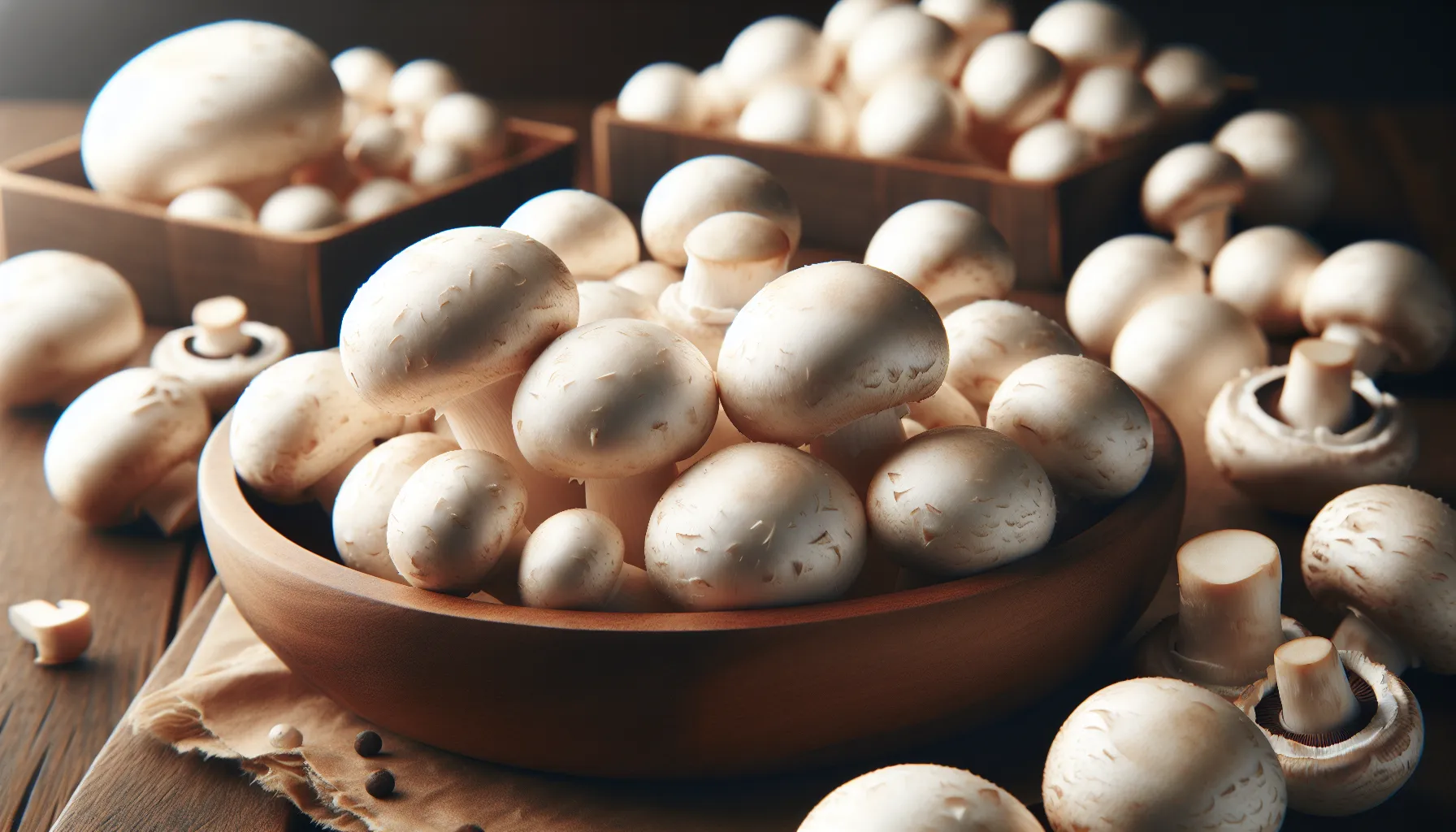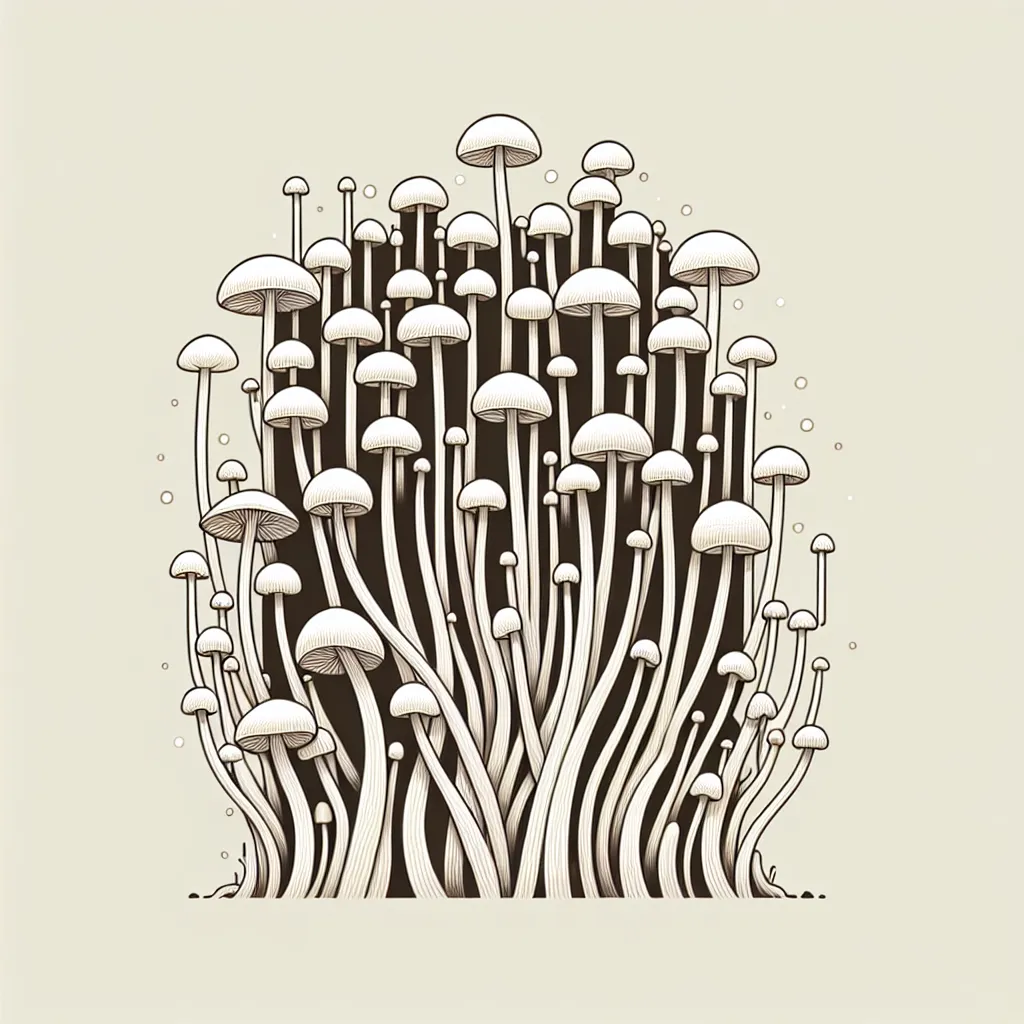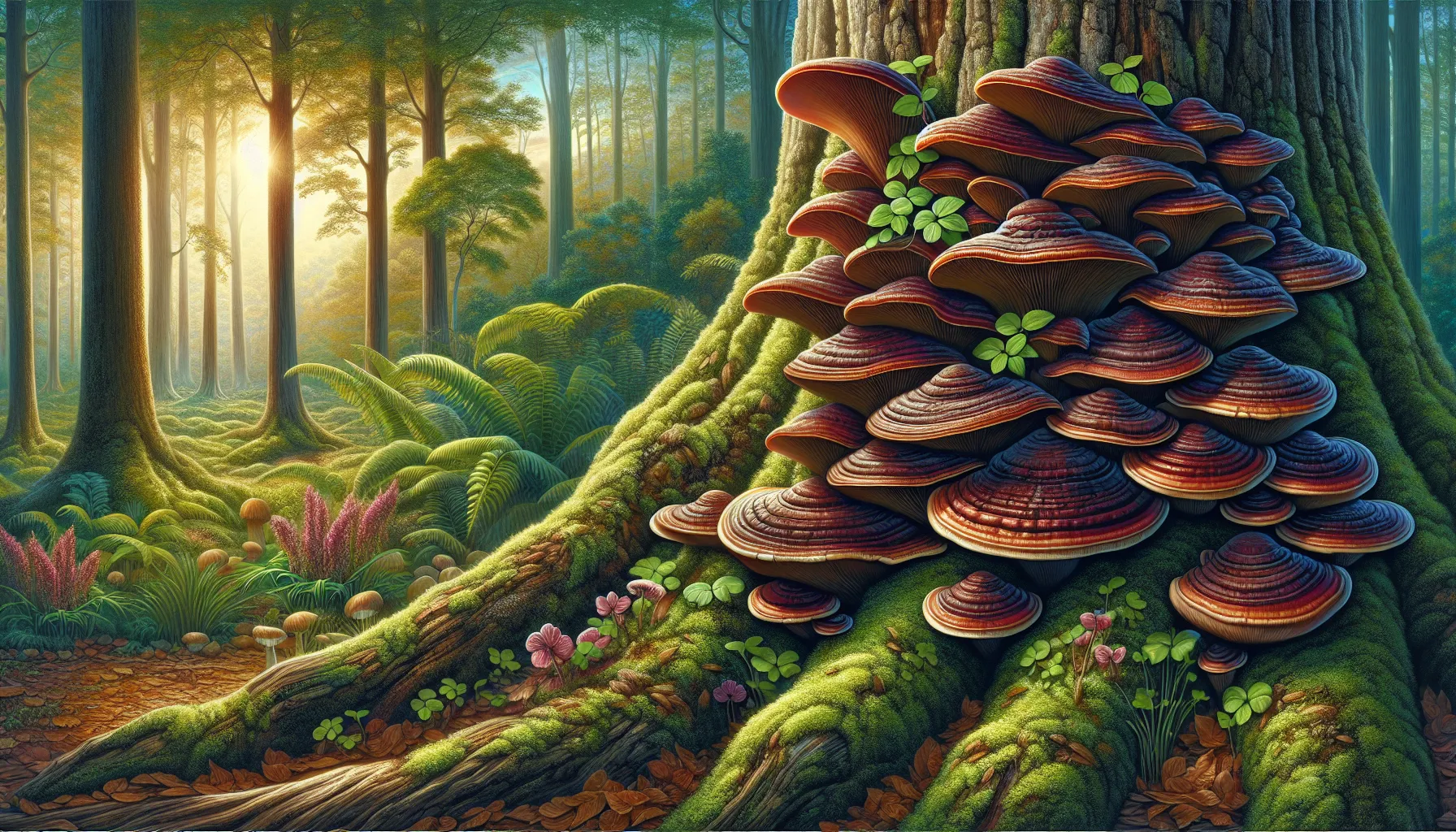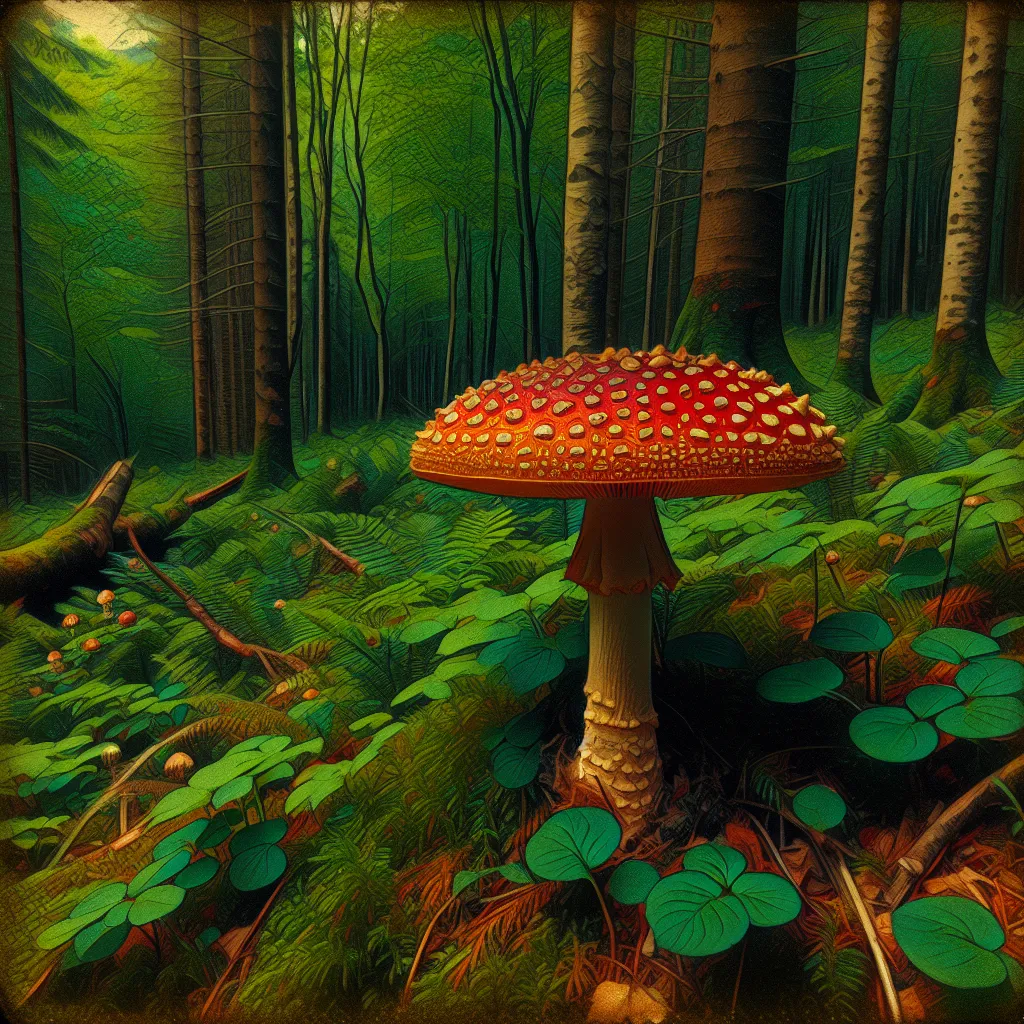Mushrooms are an incredibly diverse and fascinating group of organisms that play pivotal roles in ecosystems and cuisines worldwide. With their vast array of shapes, sizes, colors, and flavors, mushrooms have captivated the interest of foragers, chefs, and scientists alike. In this ultimate guide, we will explore the most popular mushroom types, delving into the culinary delights of cultivated varieties, the allure of wild mushrooms, the potent benefits of medicinal mushrooms, and cautionary advice regarding poisonous species.
Cultivated Mushrooms: Growing your own Fungi
White Button Mushrooms

White Button mushrooms, scientifically known as Agaricus bisporus, are the world’s most widely consumed mushroom. Their ubiquity is due to their ease of cultivation and versatility in cooking. Whether enjoyed raw in salads, sautéed, baked, or stuffed, these mushrooms offer a mild, meaty flavor that complements a plethora of dishes. For a comprehensive look into their cultivation, the American Mushroom Institute provides a wealth of information.
Cremini Mushrooms
Often referred to as Baby Bellas, Cremini mushrooms are essentially mature White Button mushrooms. Their slightly earthier and more robust flavor makes them perfect for heartier dishes like stews and roasts. They thrive when cooked with herbs and butter, revealing a woodsy taste that pairs excellently with meats.
Portobello Mushrooms
Portobello mushrooms are the fully matured form of the Agaricus bisporus species. Their large, meaty caps make them a favorite meat substitute for vegetarians and are particularly delicious when grilled or stuffed. The Mushroom Council offers a variety of Portobello recipes and cooking tips.
Enoki Mushrooms

Enoki mushrooms, with their long, noodle-like stems and tiny caps, are a staple in East Asian cuisine. They add a delightful crunch and mild flavor to soups and stir-fries. However, they must be cooked gently to avoid toughness.
Oyster Mushrooms
Named for their oyster-shaped cap and resembling the delicacy in texture rather than taste, Oyster mushrooms come in shades of yellow, blue, gray, and pink. They have a subtle flavor and a silky texture, versatile in many dishes from baked goods to soups.
Shiitake Mushrooms
The Shiitake, Lentinula edodes, is a highly esteemed mushroom native to East Asia. Renowned for its rich, earthy flavor and meaty texture, it is a favorite in many culinary traditions. Shiitake mushrooms are also recognized for their health benefits, which you can further explore through resources like the Shiitake Mushroom Association.
Wild Mushrooms: The Forager’s Delight
Wild mushrooms are foraged rather than cultivated and often boast flavors that can’t be replicated in farm-grown varieties.
Truffles
Truffles, the diamonds of the culinary world, are a type of underground mushroom treasured for their intense aroma and flavor. While not mushrooms in the traditional sense, they are a prized type of fungi found in European forests. The Truffle Hunters website is an excellent resource for truffle enthusiasts looking to learn more.
Morel Mushrooms
Morels are revered by chefs and foragers for their unique honeycomb appearance and complex flavor. They are a springtime delicacy often found in wooded areas in North America and parts of Asia and Europe. The Great Morel provides insights on how to identify and forage these elusive mushrooms.
Chanterelle Mushrooms
Chanterelles are distinguished by their vibrant colors and funnel shape. They are cherished for their peppery, fruity flavor, and are commonly used in gourmet cooking. When cooked, their flavor intensifies, making them a wonderful addition to sauces and dishes where they can shine as the main ingredient.
Medicinal Mushrooms: Ancient Remedies in Modern Times
Medicinal mushrooms have been used for centuries in traditional medicine and are now gaining recognition in the West for their health benefits.
Reishi Mushrooms

Reishi, or Ganoderma lucidum, is known as the “mushroom of immortality” in Eastern cultures. It is believed to support immune function and exhibit anti-cancer properties. Although bitter in taste, it is widely available in supplement form, such as powders and capsules.
Lion’s Mane Mushroom
Lion’s Mane, Hericium erinaceus, is both an edible and medicinal mushroom. Recognizable by its cascading, hair-like spines, this mushroom is believed to support brain health and cognitive function. For those interested in its neurotrophic benefits, the Lion’s Mane Project is a valuable resource.
Chaga Mushroom
Chaga, Inonotus obliquus, appears as a dark, crusty growth on birch trees and is heralded for its antioxidant properties. It is often consumed as a tea or in powdered form to support immune health.
Turkey Tail Mushroom
Turkey Tail, Trametes versicolor, is known for its striking, multicolored fan shape. It is studied for its potential in cancer therapy, particularly in enhancing the immune system during chemotherapy. The Turkey Tail Initiative offers research and information about this mushroom’s therapeutic potential.
Psychoactive Mushrooms: The Mystical Fungi
Psychoactive mushrooms, commonly known as “magic mushrooms,” contain psilocybin, and their use is often regulated due to their potent effects on the mind. For those interested in the therapeutic potential of psychoactive mushrooms, organizations like MAPS are conducting research on their use in mental health treatment.
Poisonous Mushrooms: The Dangers Lurking in the Wild

Identifying and avoiding poisonous mushrooms is crucial for foragers. Species like the Death Cap, Destroying Angels, and Autumn Skullcap are deadly and can be easily mistaken for edible varieties. The North American Mycological Association provides resources on mushroom safety and identification.
Mushroom Classification Based on Growth Pattern
Understanding how mushrooms grow can also provide insights into their ecological roles:
- Parasitic Mushrooms: These include species like the caterpillar fungus and honey fungus, which take from their hosts without giving back.
- Mycorrhizal Mushrooms: Examples include the chanterelle and truffle, which form symbiotic relationships with plant roots.
- Saprotrophic Mushrooms: These decomposers, like the oyster and shiitake, break down dead organic matter, recycling nutrients back into the ecosystem.
Conclusion
From the kitchen to the forest floor, the world of mushrooms is vast and varied. Whether you’re a gourmet cook, a health enthusiast, or an adventurous forager, there’s a mushroom out there for you. For those looking to dive deeper into mushroom cooking, the Mushroom Chef is an excellent resource for recipes and preparation tips. And for those eager to step into the world of foraging, be sure to read up on safety and identification with guides like the Mushroom Forager’s Field Guide.
By respecting the intricate balance of nature and the importance of proper identification, we can safely enjoy the beauty and bounty that mushrooms provide. Whether incorporated into a delicious meal, taken as a supplement for health benefits, or admired in their natural habitats, mushrooms are indeed a fascinating and essential part of our world.
